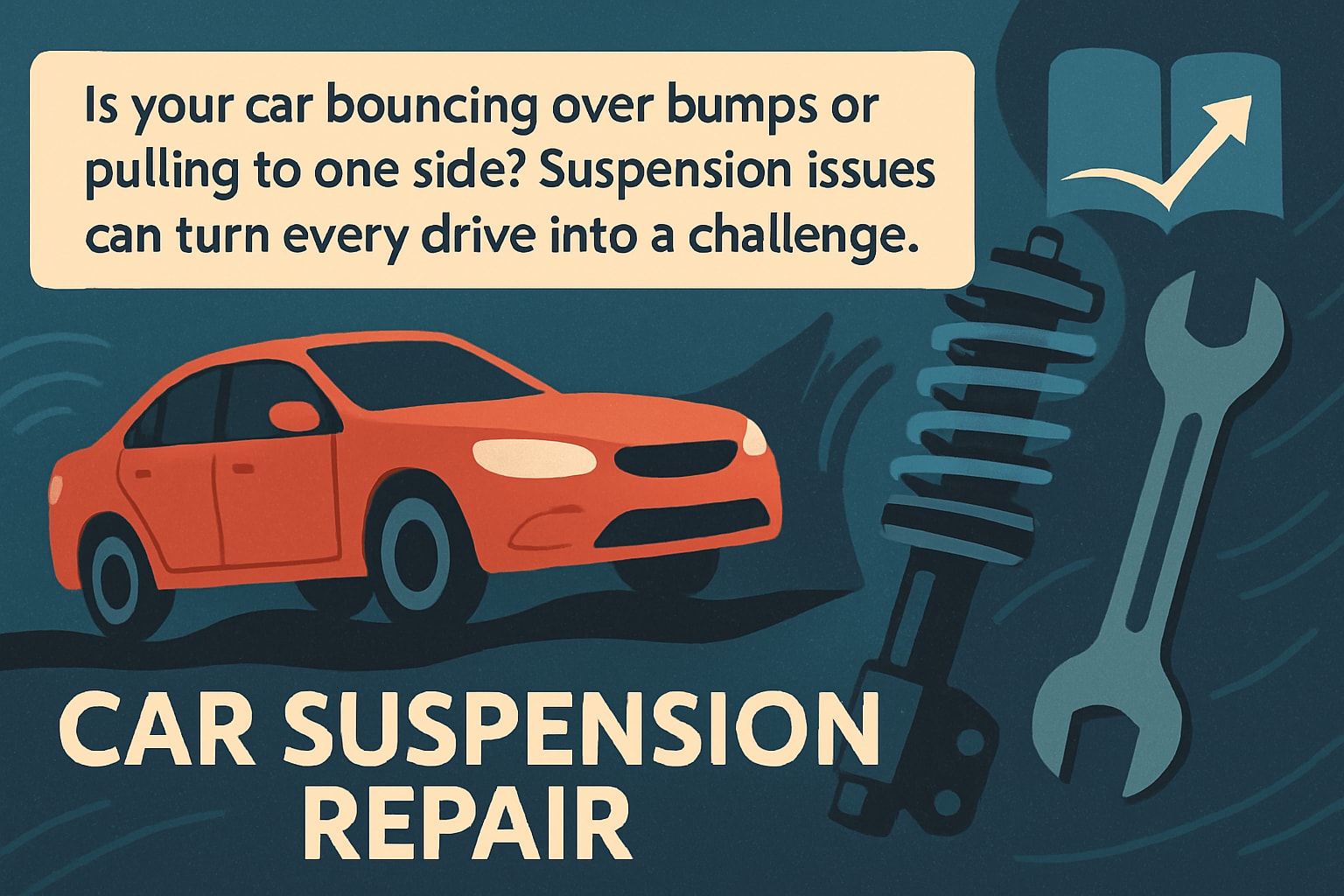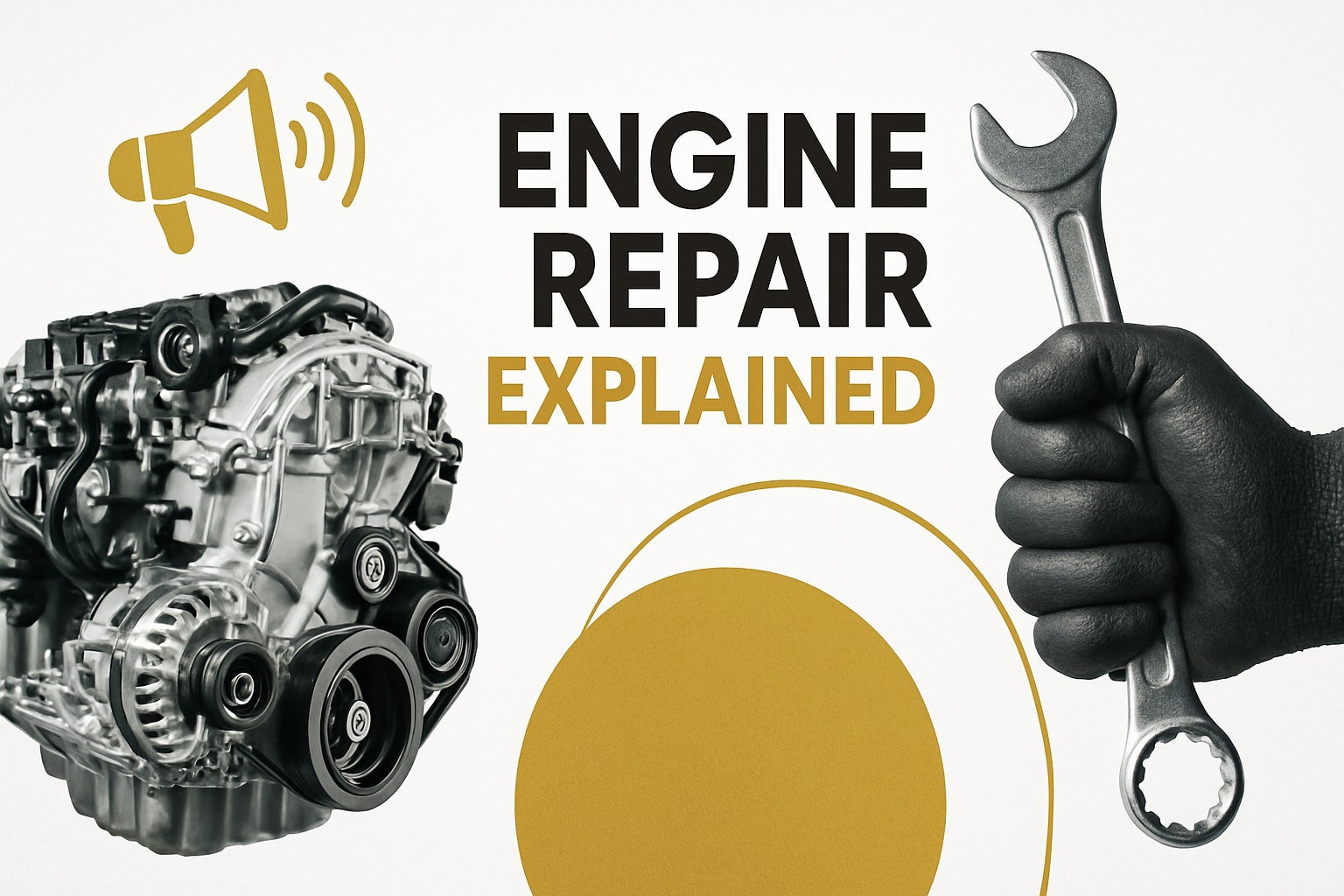Is your car bouncing over bumps or pulling to one side? Suspension issues can quickly turn an ordinary drive into a daily struggle.
The suspension system is critical for comfort, safety, and protecting your vehicle from wear. When problems arise, knowing the essentials of car suspension repair can make all the difference.
By mastering these skills, you can save money, avoid unexpected breakdowns, and enjoy a smoother, safer ride in 2025.
Ready to take control of your car's performance? Follow this comprehensive guide for expert tips, step-by-step advice, and insider knowledge tailored for modern vehicles.
Inside, you will find everything you need to know about car suspension repair, including system basics, common warning signs, diagnostic steps, DIY versus professional repairs, a detailed cost breakdown, and the latest maintenance trends.
Understanding Car Suspension Systems
A car’s suspension system does far more than simply absorb bumps. It is the crucial interface between your vehicle and the road, responsible for handling, comfort, and safety. When car suspension repair is neglected, ride quality and control suffer, leading to bigger problems down the line. Let’s explore the basics and why this system deserves your attention.
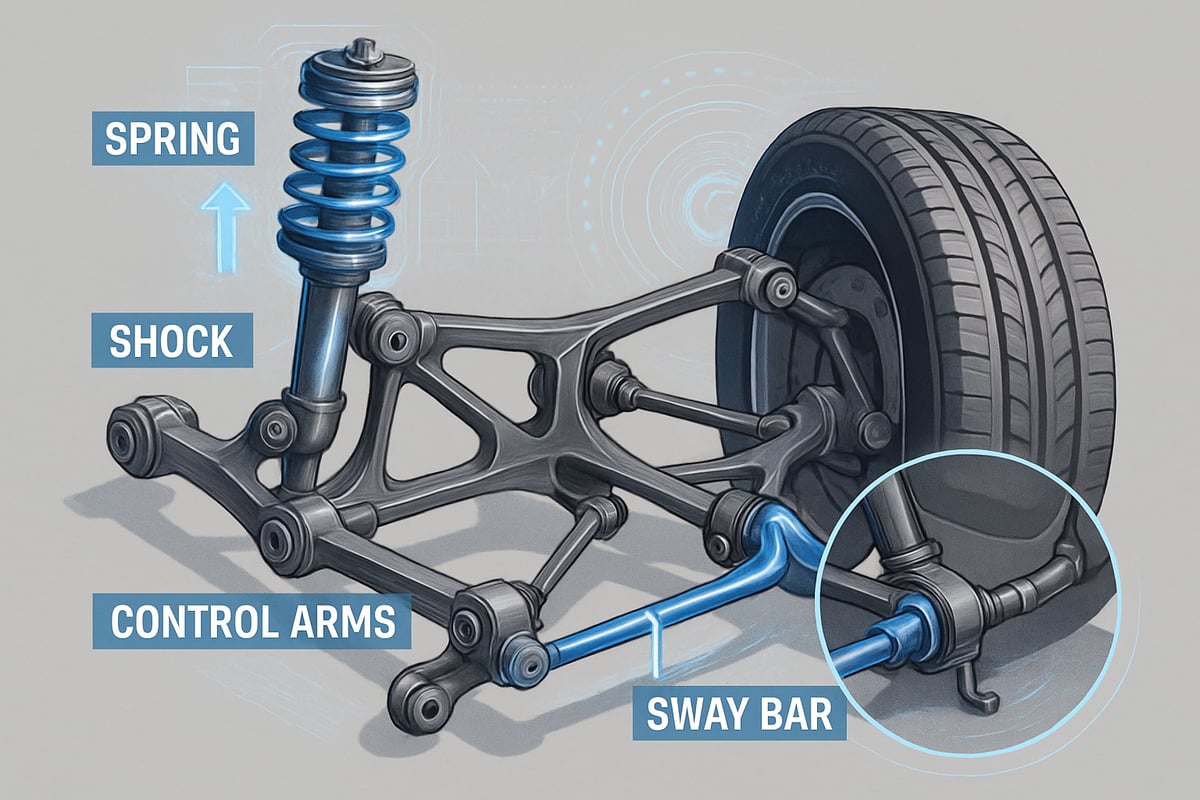
What Is a Car Suspension System?
A car suspension system is designed to absorb road shocks, maintain optimal tire contact with the ground, and ensure the vehicle handles predictably. The main components include springs, shock absorbers or struts, control arms, bushings, ball joints, and sway bars. Each part plays a specific role in keeping your car stable and comfortable.
For example, modern vehicles often feature advanced multi-link suspensions, which improve handling and ride quality. According to service center statistics, suspension issues are a common source of ride complaints. To better understand car suspension repair and broader brake issues, you can review this brake and suspension repair overview.
Types of Car Suspension Systems in 2025
There are two basic types: independent and dependent suspension. Independent systems let each wheel move separately, while dependent systems link wheels together. In 2025, many vehicles use air suspension, adaptive systems, and electronic dampers for a tailored ride.
Luxury cars increasingly rely on air or adaptive suspensions, offering drivers adjustable comfort and performance settings. Electronic dampers and self-leveling systems further enhance stability and ride height. While these features improve driving dynamics, car suspension repair for advanced systems can require specialized tools and expertise. Each system’s complexity affects the ease and cost of maintenance.
Common Suspension Components and Their Roles
Understanding the function of each suspension part is key to effective car suspension repair. Here’s a quick comparison:
| Component | Role | Failure Effect |
|---|---|---|
| Springs (coil, leaf, air) | Support weight, absorb bumps | Sagging, rough ride |
| Shock absorbers/struts | Dampen motion, control bouncing | Excessive bounce, poor handling |
| Control arms & bushings | Connect wheels, allow movement | Instability, uneven tire wear |
| Ball joints | Pivot steering and suspension | Noise, loss of control |
| Sway bars | Reduce body roll during turns | Excessive leaning |
Worn control arm bushings, for example, often cause uneven tire wear and instability, highlighting the importance of timely car suspension repair.
How Suspension Affects Vehicle Performance and Safety
A healthy suspension system is critical for safe braking, precise steering, and even tire wear. When car suspension repair is delayed, stopping distances can increase by up to 20 percent, according to recent studies. Poor suspension also leads to reduced control, especially during emergency maneuvers.
A real-world example: a car with worn shocks may fail a safety inspection due to compromised handling. Regular inspection and prompt car suspension repair keep your vehicle performing safely and efficiently.
Signs and Symptoms of Suspension Problems
Is your car suddenly making odd noises or handling differently? Recognizing the early signs of suspension trouble is crucial for timely car suspension repair. Addressing issues promptly not only improves ride quality but also prevents further damage and safety risks.
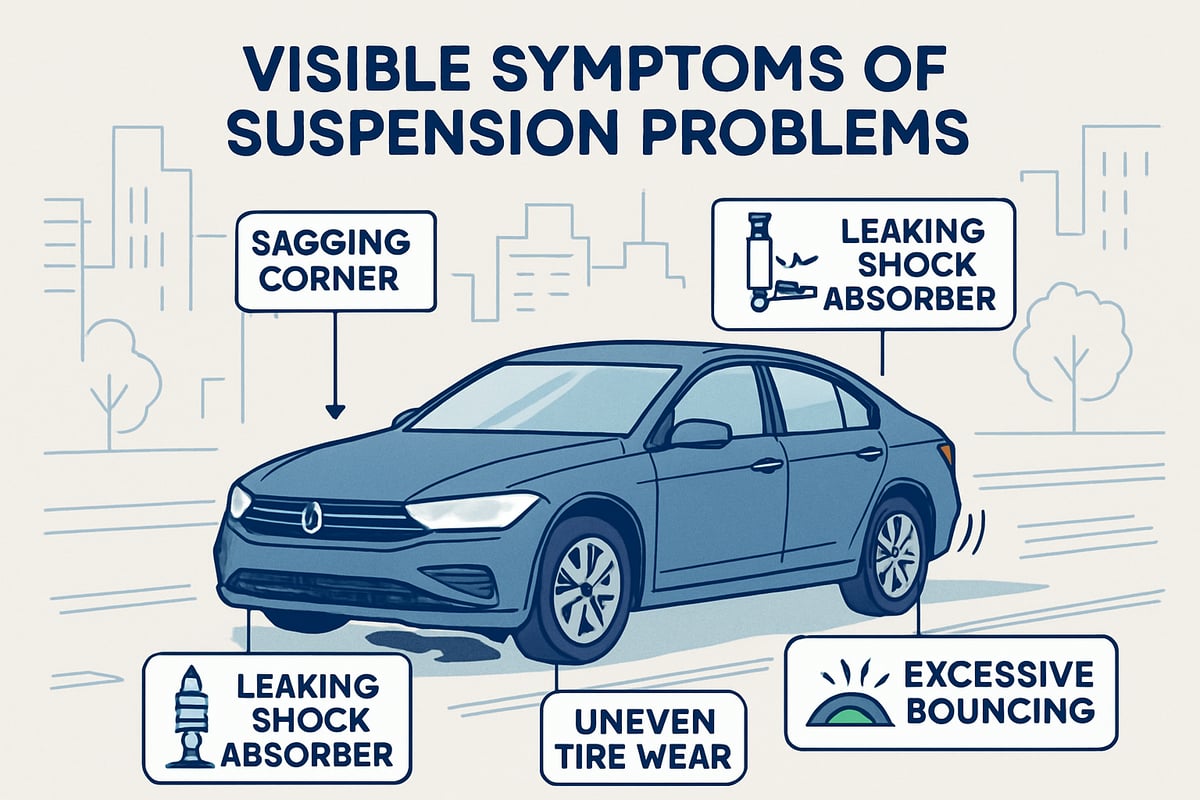
Early Warning Signs to Watch For
Suspension problems often start with subtle changes. Listen for unusual noises like clunking, squeaking, or rattling when driving over bumps. If your vehicle bounces excessively or sways noticeably after hitting a pothole, it may signal worn shocks or struts.
Another red flag is if your car pulls to one side or the steering feels uneven during normal driving. Visible sagging or an uneven ride height can also point to underlying suspension issues. For example, persistent nose-diving when braking is a classic indicator that car suspension repair may be needed soon.
Visual Inspection: What to Check
A quick visual inspection can reveal many suspension problems before they become severe. Look for leaking fluid around shocks or struts, which suggests internal seal failure. Check springs for cracks, breaks, or other visible deformities.
Inspect bushings for signs of wear, such as cracks or missing pieces. Examine your tires for uneven or rapid wear patterns, as these often result from misaligned or damaged suspension parts. Oil leaks from struts are a clear signal that immediate car suspension repair is necessary to avoid further complications.
Performance-Related Symptoms
Notice changes in how your car handles corners or reacts during sudden maneuvers. Poor handling, excessive body roll, or increased stopping distances can all indicate a suspension problem. You may also feel vibrations or instability at highway speeds.
If the steering feels loose or unresponsive, this can point to underlying component wear. According to industry studies, one in five vehicles on the road today has at least one worn suspension part, making regular car suspension repair inspections a smart preventive measure.
When to Seek Immediate Repair
Certain symptoms demand urgent attention. If you hear severe noises, experience a sudden change in handling, or notice that your vehicle feels unsafe, stop driving and inspect the suspension. A visibly broken or detached component, such as a snapped spring or ball joint, can cause loss of control.
For instance, a broken ball joint may result in a collapsed wheel, posing a serious safety hazard. If you suspect major failure, do not continue driving—instead, consider reaching out to professional suspension repair services for expert diagnosis and prompt car suspension repair.
Diagnosing Suspension Issues: Step-by-Step Guide
Diagnosing issues accurately is crucial for effective car suspension repair, especially as vehicles become more advanced in 2025. A systematic approach ensures safety, saves money, and prevents unnecessary part replacements. Follow these six steps to identify and address suspension problems with precision.
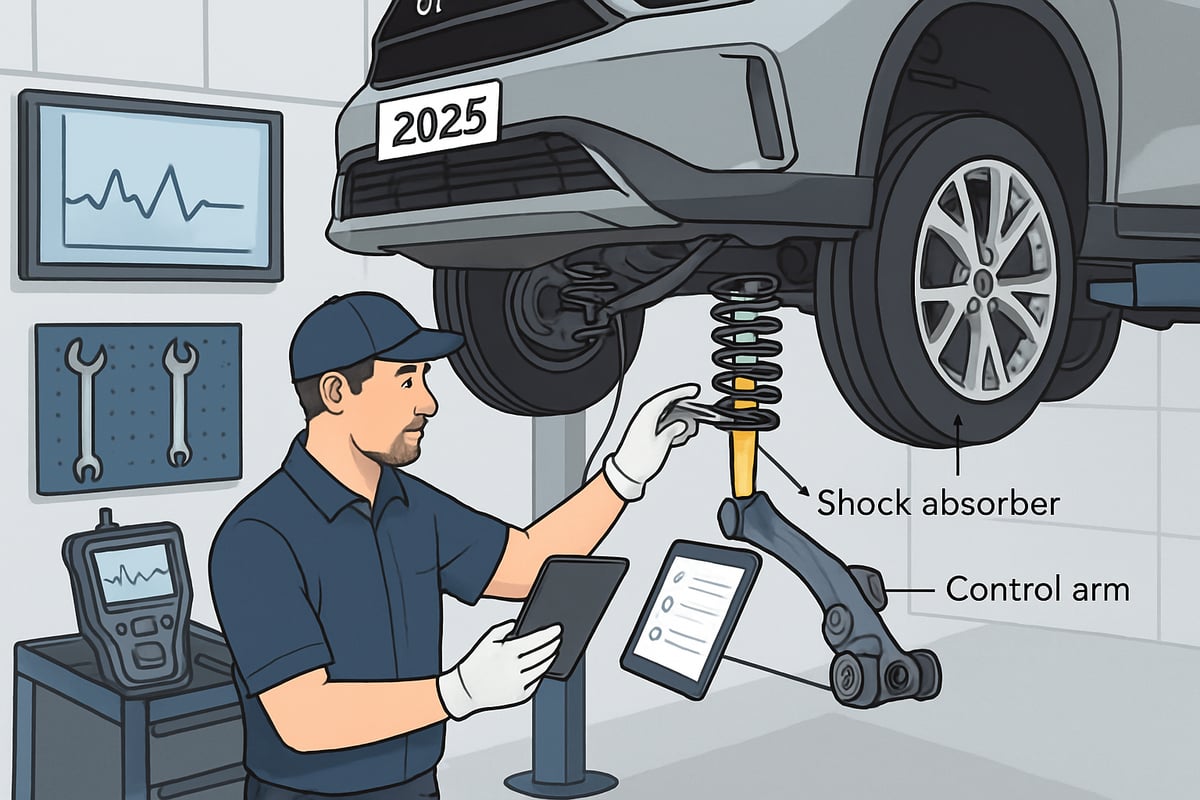
Step 1: Road Test and Symptom Analysis
Start your car suspension repair process with a comprehensive road test. Drive the vehicle over various surfaces, such as smooth roads, speed bumps, and uneven terrain. Pay close attention to any unusual noises, like clunking or squeaking, as well as changes in ride comfort or handling.
Make note of when symptoms appear. Does the car pull to one side while braking or turning? Is there excessive bouncing after hitting a bump? These observations are critical for identifying the root cause. For example, a clunking sound during turns often points to worn ball joints. Detailed notes from the road test will guide the next steps in your car suspension repair.
Step 2: Visual and Physical Inspection
After the road test, conduct a thorough visual and physical inspection. Safely lift the vehicle and examine the undercarriage. Look for leaking fluid around shocks or struts, which signals a need for immediate car suspension repair.
Check for rust, corrosion, and any visibly damaged or broken parts. Grasp each wheel and wiggle it to test for excessive play. Loose movement may indicate worn ball joints or bushings. Inspect springs for cracks and ensure all mounting points are secure. A careful inspection helps you spot issues early and plan your car suspension repair effectively.
Step 3: Component-Specific Checks
With the basics covered, move to component-specific tests. For shocks and struts, press down firmly on each corner of the car. Watch how the vehicle rebounds. If it bounces more than once, the dampers may be worn and need car suspension repair.
Inspect springs for sagging, cracks, or breaks. Examine control arms and bushings for splits, tears, or looseness. Check sway bars and end links for play or broken mounts. Test ball joints by moving the wheel vertically and horizontally. Each part plays a unique role, so targeted checks are essential for accurate car suspension repair.
Step 4: Advanced Diagnostic Tools
Modern vehicles often feature electronic or adaptive suspension systems. Use diagnostic scan tools to check for stored error codes or dashboard warning lights related to suspension faults. Advanced systems may also have ride height sensors or onboard diagnostics that provide real-time data.
Leverage these technologies to pinpoint issues that visual inspections might miss. For instance, an adaptive suspension fault could be stored as a digital code, requiring specialized tools for diagnosis. Embracing these advanced tools ensures your car suspension repair is thorough and up to date with 2025 technologies.
Step 5: Document Findings and Prioritize Repairs
Careful documentation is a critical part of the car suspension repair process. Record every symptom, inspection result, and diagnostic code. This organized approach helps you prioritize repairs, focusing first on safety-critical components like ball joints or control arms.
Plan preventive maintenance based on wear patterns. For example, if two shocks are worn, replacing all four maintains balanced handling and extends the system's life. Structured documentation streamlines your car suspension repair and helps avoid repeat issues.
Step 6: When to Consult a Professional
Some suspension problems are best left to professionals, especially if you encounter complex electronic or air systems. If you lack specialized tools or experience, or if multiple, unclear faults are present, consider expert help. Issues like air suspension leaks often require advanced leak detection equipment.
In 2025, many drivers benefit from mobile auto repair for suspensions, which brings advanced diagnostics and repair directly to your location. Relying on professionals when needed ensures the highest safety standards and optimal results for your car suspension repair.
DIY Suspension Repairs vs. Professional Service
Car suspension repair is a critical skill for any car owner looking to save money and maintain control over their vehicle’s health. Understanding which repairs you can safely perform at home, and which require a professional touch, is essential for both safety and cost-effectiveness. Let’s explore the differences between DIY and professional service for car suspension repair.
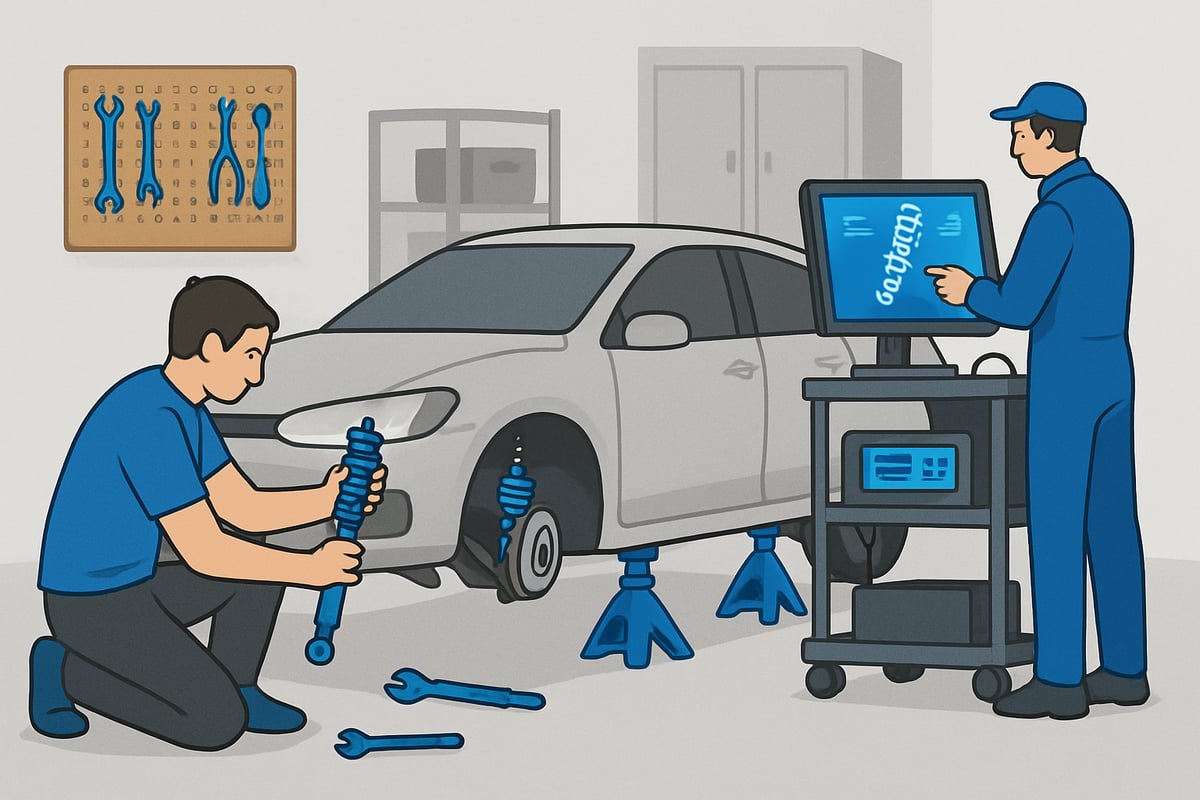
What Suspension Repairs Can You Do Yourself?
Many car suspension repair tasks can be handled with basic hand tools and a methodical approach. Replacing shocks, struts, sway bar links, and some bushings is often within reach for skilled DIYers. Start by safely lifting your vehicle, securing it with jack stands, and removing the wheels.
- Always wear safety gear
- Use a torque wrench for reassembly
- Double-check all bolts and fasteners
DIY car suspension repair can save on labor costs, especially for straightforward jobs like shock replacement. However, always consult your vehicle’s manual and never attempt repairs beyond your comfort level.
When to Leave It to the Pros
Certain car suspension repair jobs are best left to professionals. Complex repairs, such as replacing control arms, ball joints, or working on electronic and air suspension systems, often require specialized tools and knowledge. Improper installation of critical components could lead to dangerous driving conditions.
If your repair task involves spring compressors, electronic diagnostics, or advanced calibrations, seek professional help. Mistakes in these areas can compromise your vehicle’s safety and may result in higher costs down the line. Trusting an expert ensures your car suspension repair is completed to the highest standards.
Cost Comparison: DIY vs. Professional Repair
DIY car suspension repair can offer significant savings, often cutting labor costs by up to 50 percent. For example, replacing shocks at home avoids shop fees. However, the risk of misdiagnosis or improper installation may negate these savings if additional repairs are needed.
Professional shops provide warranties and quality assurance, which can justify their higher rates. On average, professional car suspension repair costs range from $1,000 to $5,000 depending on the components involved. Weigh the potential savings against the risk and complexity before deciding on the DIY route.
Choosing the Right Mechanic or Shop
Selecting the right shop for car suspension repair is crucial, especially for modern vehicles with advanced suspension systems. Look for ASE-certified technicians with experience on your make and model. Ask about parts quality, diagnostic equipment, and warranty options.
Read reviews and consider specialized shops if you drive a luxury or European vehicle. For those interested in performance or handling upgrades, the Suspension and handling upgrades guide offers valuable insights into shop selection and upgrade considerations. Making an informed choice ensures your car suspension repair delivers lasting results.
Cost Breakdown: Suspension Repair in 2025
Understanding the financial side of car suspension repair is essential for planning and budgeting. Costs can vary based on parts, labor, and technology, especially as newer vehicles introduce advanced suspension systems. Here’s a detailed look at what to expect in 2025.
Average Repair Costs by Component
The cost of car suspension repair in 2025 depends on which parts need attention. Here’s a summary of average prices per component:
| Component | Average Cost (USD) |
|---|---|
| Shocks/Struts | $806 – $904/axle |
| Coil Springs | $580 – $650/pair |
| Control Arm Bushings | $245 – $302/set |
| Ball Joints | $248 – $339/each |
| Sway Bar Links | $100 – $200 |
These figures are based on recent data from 2023 to 2025. As car suspension repair becomes more complex with advanced systems, costs may rise further. For a broader perspective on how the market is evolving, the Automotive Suspension System Market Size Report highlights ongoing growth in repair expenses and technology.
Factors Affecting Suspension Repair Costs
Several factors influence the total price of car suspension repair. The make, model, and age of your vehicle play a significant role. Advanced systems like air or adaptive suspension often require specialized components and diagnostics.
Labor rates fluctuate depending on your region. Urban areas typically have higher shop fees. The choice between OEM and aftermarket parts also impacts the final bill. For instance, luxury cars often demand proprietary parts, increasing overall costs by 20 to 40 percent. Staying informed about industry trends, such as those detailed in the Global Vehicle Suspension Systems Market Growth, can help you anticipate future pricing shifts.
How to Save on Suspension Repairs
There are several smart ways to manage car suspension repair expenses. Always compare quotes from multiple repair shops before proceeding. Opting for high-quality aftermarket parts can offer reliability at a lower price than OEM components.
Bundling repairs, such as replacing all bushings at once, can reduce labor costs. Preventive maintenance is key. Early detection and replacement of worn parts, like bushings, help prevent more expensive damage to control arms or other suspension elements. Regular inspections can make a big difference in your long-term savings.
Insurance and Warranty Considerations
When planning for car suspension repair, it’s important to review your insurance and warranty coverage. Most basic warranties do not cover suspension wear and tear, but some extended warranties or service contracts might include these repairs.
Insurance usually only covers suspension damage resulting from accidents, not normal use. Before authorizing repairs, check your policy details and warranty documents. This step can help you avoid unexpected out-of-pocket expenses and ensure you maximize available benefits.
Future-Proofing: Suspension Maintenance and Trends for 2025
Staying ahead of issues with your car suspension repair means embracing both routine care and emerging trends. As vehicles evolve, so do the strategies required to maintain optimal ride quality and safety.
Essential Maintenance Tips for Modern Suspensions
Regular inspections are crucial for effective car suspension repair. Experts recommend checking your suspension every 12,000 to 15,000 miles or at least once a year. This proactive approach helps catch wear early, especially on air or adaptive systems.
Keep tires properly inflated and aligned to minimize uneven stress on suspension parts. Promptly replace worn components to prevent further damage. Cleaning the undercarriage will help prevent corrosion, especially in areas with harsh weather.
Scheduled maintenance can detect small leaks in air suspension systems before they become costly repairs. By following these guidelines, you can extend the life of your car's suspension and avoid unexpected breakdowns.
Adapting to Advanced Suspension Technologies
Modern vehicles increasingly feature electronic and adaptive suspension systems. Effective car suspension repair now requires specialized diagnostic equipment and technical know-how. Many systems need periodic software updates to maintain peak performance, especially in brands like Tesla or Mercedes.
Staying informed about recalls and technical service bulletins is vital. Over-the-air updates can recalibrate suspension settings, enhancing comfort and safety. Owners should ensure their service providers are trained in these advanced technologies.
Tech-savvy drivers benefit from understanding their vehicle's unique suspension requirements. This knowledge helps avoid costly mistakes and ensures the longevity of critical components.
Common Issues with Air and Adaptive Suspensions
Air and adaptive suspensions offer improved ride quality, but they are susceptible to unique problems. Car suspension repair for these systems often addresses air leaks, compressor failures, or malfunctioning sensors. These repairs tend to be more expensive than traditional setups.
For example, replacing an air suspension can cost over $2,000 per corner. Routine system scans, moisture removal, and filter changes are essential preventive measures. Ignoring minor issues can lead to major failures and increased costs.
Industry reports, such as the Automotive Suspension Shock Absorber Market Forecast, highlight the growing complexity and market value of advanced suspension systems, reinforcing the need for careful, informed maintenance.
The Role of Professional Mobile Mechanics in 2025
In 2025, professional mobile mechanics are transforming car suspension repair. These specialists bring diagnostic tools and expertise directly to your location, saving time and offering unmatched convenience.
Mobile mechanics are especially valuable for luxury vehicles or those with complex electronic suspensions. They can handle repairs on-site, minimizing downtime and ensuring your car is safe to drive.
Market trends suggest mobile service adoption will continue to grow as vehicles become more advanced. Relying on certified mobile professionals helps future-proof your vehicle's suspension care and keeps you ahead of emerging issues.
Now that you have a clear understanding of how your car’s suspension works and the steps to keep it in top shape, you’re better prepared to make informed decisions about maintenance and repairs. Whether you’re noticing unusual noises, uneven tire wear, or just want peace of mind for the road ahead, having a trusted expert can make all the difference. At Revera Mobile Mechanic, we bring advanced diagnostics and dealership-level expertise to your driveway—saving you time and ensuring your vehicle’s safety and performance. If you’re ready to experience worry-free driving, Book service!


